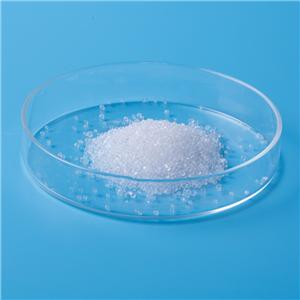Effect of glycerol tributyrate on healthy development of animal intestine
As a short-chain fatty acid in the intestine, Butyric acid promotes the intestinal epithelial cells growth and development. Recent studies have shown that butyric acid also has a strong bactericidal effect. It can affect protein synthesis and so on. However, the liquid form and volatility of butyric acid, as well as the special odor, cause it is not conducive to practical production and application. As a precursor of butyrate,Glycerol tributyrate not only solves the characteristics that butyric acid is volatile and difficult to add but also improves the disadvantage of direct use of butyric acid. It is a good nutritional additive product. Triglyceride (Tributyrin) is naturally found in milk fat and consists of three-component butyric acid and a molecule of glycerol. The chemical formula is C15H26O6, white near-oil liquid with almost no smell or slight fat aroma. Soluble in ethanol, ether and other organic solvents, extremely insoluble in water. Tributyrate is decomposed into butyrate, glycerol butyrate, and glycerol. Butyric acid is absorbed and transported to the liver and provides energy to the intestinal mucosal epithelial cells. The butyric acid in intestinal epithelial cells is converted into butyrate coenzyme by butyrate A synthase A, butyrate coenzyme A which does not need to bind to carnitine molecules and penetrates directly through the mitochondrial intima. Then through a series of reactions such as hydroxymethylglutaryl coenzyme A cycle, rapid formation of acetyl coenzyme A participate in energy metabolism. butyric acid is the main respiratory fuel for colon epithelial cells. in vitro experiments showed that the colon preferentially burned butyric acid to supply energy for epithelial cells, followed by nutrients such as glucose and glutamine, and butyric acid provided more than 70% of the energy for colon epithelial cells. The small intestine is working as a key site for digestion and absorption. The functional unit of the small intestine is the villi. The whole structure of the morphological includes both the height of the villi and the depth of the recess. Tributyrate can increase the height of intestinal villi, reduce the depth of crypt, and increase the ratio of intestinal villi height to recess depth. There are three parts of the small intestinal which are the epithelium, lamina propria, and mucosal myometrium. The integrity of the mucosal cells can assure strong digestion and decomposing food and transport nutrients. Butyric acid is the most effective substance in short-chain fatty acids that can promote the proliferation of intestinal epithelial cells. In the way of Na -H exchange, butyric acid can obviously reduce diarrhea by a better Na and intestinal water absorption. Especially when there are not enough carbohydrates in the colon, it will reduce the formation of short-chain fatty acids and produce low sodium absorption in the colon, which can easily lead to diarrhea. Digestive tract flora has a very complex effect on gastrointestinal morphology and digestive absorption function. Under normal conditions, beneficial bacteria in the gastrointestinal tract of animals occupy an absolute advantage, which can inhibit the attachment and proliferation of harmful bacteria such as Escherichia coli in the intestine and is beneficial to the physiological function of the intestine. The mechanism of glycerol tributyrate regulating intestinal flora is rarely reported. It is generally believed that butyric acid and glycerol monobutyrate produced by its decomposition can inhibit the growth of Salmonella, Escherichia coli, Clostridium, and other pathogenic microorganisms, and increase the number of beneficial flora such as Lactobacillus. http://www.betterchemtech.com/news/application-of-butyric-acid




